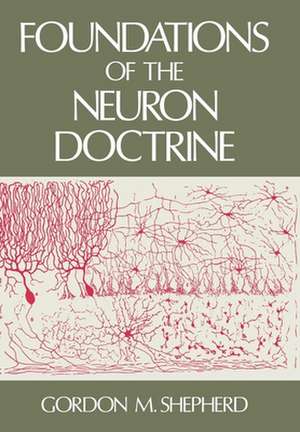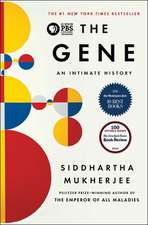Foundations of the Neuron Doctrine: History of Neuroscience, cartea 6
Autor Gordon M. Shepherden Limba Engleză Hardback – 6 feb 1992
| Toate formatele și edițiile | Preț | Express |
|---|---|---|
| Hardback (2) | 382.88 lei 31-38 zile | |
| Oxford University Press – 6 feb 1992 | 382.88 lei 31-38 zile | |
| Oxford University Press – 17 dec 2015 | 597.57 lei 31-38 zile |
Preț: 382.88 lei
Preț vechi: 692.14 lei
-45% Nou
Puncte Express: 574
Preț estimativ în valută:
73.26€ • 76.49$ • 60.64£
73.26€ • 76.49$ • 60.64£
Carte tipărită la comandă
Livrare economică 24-31 martie
Preluare comenzi: 021 569.72.76
Specificații
ISBN-13: 9780195064919
ISBN-10: 0195064917
Pagini: 352
Ilustrații: halftone and line illustrations
Dimensiuni: 164 x 243 x 26 mm
Greutate: 0.82 kg
Editura: Oxford University Press
Colecția OUP USA
Seria History of Neuroscience
Locul publicării:New York, United States
ISBN-10: 0195064917
Pagini: 352
Ilustrații: halftone and line illustrations
Dimensiuni: 164 x 243 x 26 mm
Greutate: 0.82 kg
Editura: Oxford University Press
Colecția OUP USA
Seria History of Neuroscience
Locul publicării:New York, United States
Cuprins
Introduction and overview; From the beginnings to the cell theory; Do nerve cells belong in the cell theory?; Nerve cells or nerve nets?; Kolliker gives in; Support builds for networks; The nerve cell studies of Freud; The revolutionary method of Golgi; A neuron theory takes form: His, Forel, Nansen; Ramon Y Cajal: The shock of recognition; The early discoveries of Cajal; The laws of Cajal; Joining the mainstream; The neuron doctrine; The law of dynamic polarization; Controversy; The synapse and the growth cone; Forging a consensus; Confrontation in Stockholm; Modern revisions of the neuron doctrine; Comments on sources; References; Author index; Subject index.
Recenzii
The excerpts from original articles and Shepherd's scholarly comment give a balanced and orderly history of the evidence for the neuron doctrine from the earliest discoveries to its final triumph in the hands of the Spanish histologist Ramön y Cajal. Shepherd's treatment of the reticular theorists is particularly helpful. The book is of interest and importance for anyone interested in the history of the nervous system. The book is essential for every library which covers the history of biology or medicine, and a pleasure for those of us interested in the nervous system.
Notă biografică
Gordon M. Shepherd is Professor of Neurobiology at Yale University School of Medicine. He carries out research on the olfactory pathway as a simple system for the microcircuit organization of the brain. He is a former Editor-in-Chief of the Journal of Neurophysiology and Journal of Neuroscience. His books include Handbook of Brain Microcircuits (edited with Sten Grillner) and Creating Modern Neuroscience.






























